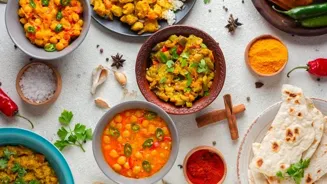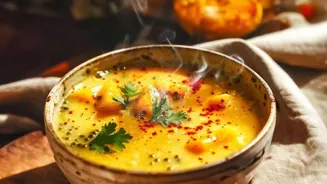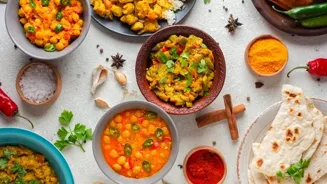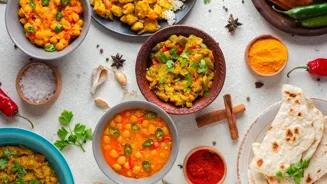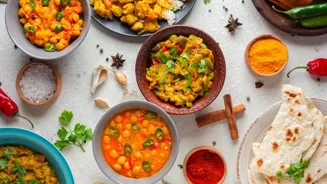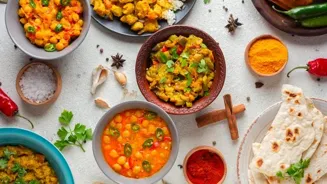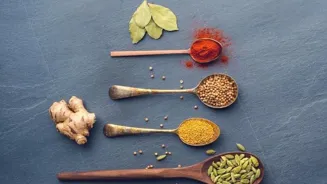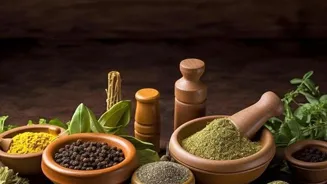Discover the art of building a vibrant Indian pantry! Essential tips for flavorful meals await. Dive in!
In every Indian home, the pantry is more than just a storage space; it's the heart of culinary creativity.
It’s where the magic happens, where simple ingredients transform into flavorful dishes that nourish the body and soul.
Building a well-stocked Indian pantry is an investment in delicious meals and culinary convenience. It ensures you're always ready to whip up a quick weeknight dinner or a festive feast. But where does one start? Fear not!
This guide will walk you through the essential ingredients and provide tips to create a pantry that would make any Indian mom proud.
Indian kitchen essentials: lentils & legumes for versatile meals
Let's begin with the foundation of any Indian kitchen: the lentils and legumes. These are the protein powerhouses that form the base of many vegetarian and vegan dishes.
Think of staples like toor dal (split pigeon peas), moong dal (split green gram), urad dal (split black gram), chana dal (split chickpeas), and masoor dal (red lentils). Each dal has its unique flavor and texture, perfect for making everything from comforting dal tadka to crispy dosas.
Keeping a variety of lentils on hand ensures you always have a nutritious and versatile option for meals. Don't forget about dried beans like rajma (kidney beans), chole (chickpeas), and lobhia (black-eyed peas), which are essential for hearty curries and stews.
Properly storing lentils and legumes in airtight containers will protect them from moisture and pests, ensuring they stay fresh for longer. A well-stocked pantry with these essentials will enable you to create a wide array of wholesome and fulfilling meals.
This ensures that you are always ready to cook.
Essential spices for authentic Indian flavor - building blocks of dishes
Next up are the spices – the soul of Indian cooking. A well-stocked spice rack is a must for authentic Indian flavor. Start with the basics: turmeric powder (haldi), red chili powder (lal mirch), coriander powder (dhania), cumin powder (jeera), and garam masala.
These five spices are the building blocks of countless Indian dishes. From there, you can expand your collection to include other essential spices like mustard seeds (rai), fenugreek seeds (methi), cardamom (elaichi), cloves (laung), cinnamon (dalchini), and bay leaves (tej patta).
Each spice adds a unique depth of flavor and aroma to your cooking. Invest in whole spices whenever possible and grind them yourself for the freshest flavor. Store your spices in airtight containers away from heat and sunlight to preserve their potency.
A dedicated spice rack or drawer will keep your spices organized and easily accessible. The aroma that fills your kitchen as you open your spice containers will transport you.
Indian diet essentials: rice, atta, besan, sooji, rice flour
Moving on to the grains and flours, rice is a fundamental component of the Indian diet. Keep a variety of rice on hand, such as basmati rice for biryanis and pulaos, and regular long-grain rice for everyday meals.
Atta (whole wheat flour) is essential for making rotis, chapatis, and parathas – the daily bread of many Indian households. You can also explore other flours like besan (gram flour) for pakoras and dhoklas, sooji (semolina) for upma and halwa, and rice flour for dosas and idlis.
Store grains and flours in airtight containers in a cool, dry place to prevent them from becoming stale or infested with pests. Regular sunning of grains is an age old practice. This helps to keep the moisture away. These form your daily nourishment.
Essential oils for Indian cooking, store properly, choose wisely
Oils and fats are essential for cooking and add richness to Indian dishes. Ghee (clarified butter) is a staple in many Indian households and is used for cooking, frying, and drizzling over food. Vegetable oil, such as sunflower oil or canola oil, is a versatile option for everyday cooking.
Mustard oil is commonly used in certain regional cuisines like Bengali and Punjabi cooking. Coconut oil is popular in South Indian cooking and adds a unique flavor to dishes. Always store oils and fats in airtight containers away from heat and sunlight to prevent them from going rancid.
Choose oils that are best suited for Indian cooking. Remember some dishes need special oils, for the best taste.
Conditional
Add nuts and dried fruits to your pantry for a delicious and nutritious addition to your meals. Almonds, cashews, pistachios, and walnuts are commonly used in Indian sweets, desserts, and savory dishes. Raisins, dates, and figs are perfect for adding sweetness and texture to snacks and desserts.
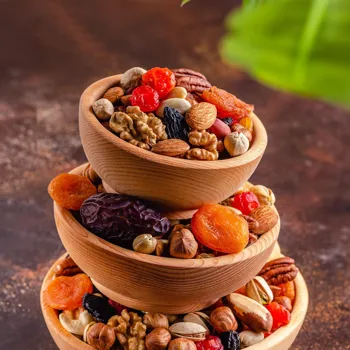
Store nuts and dried fruits in airtight containers in the refrigerator or freezer to prevent them from spoiling. Nuts and dried fruits are not just delicious snacks; they can also be used to enhance the flavor and texture of your dishes. The crunch and sweetness brings dishes to a next level.
They are also considered auspicious.
Essential Indian pantry items for flavorful cooking
Lastly, other essential ingredients that no Indian pantry should be without include onions, garlic, ginger, green chilies, and tomatoes. These ingredients form the base of many Indian curries and gravies. Garlic and ginger paste is a convenient option for quick cooking.
Jaggery (gur) and sugar are essential sweeteners. Tamarind paste or powder adds a tangy flavor to dishes. Baking soda and baking powder are necessary for making fluffy breads and cakes. Keep these ingredients on hand to add depth and flavor to your cooking.
Having these ingredients make you ready for any recipe.
Tips and ingredients for a well-stocked Indian pantry
By following these tips and stocking up on these essential ingredients, you'll be well on your way to building a well-stocked Indian pantry that will inspire you to create delicious and authentic Indian meals for years to come. Happy cooking!
AI Generated Content. Glance/InMobi shall have no liability for the content
